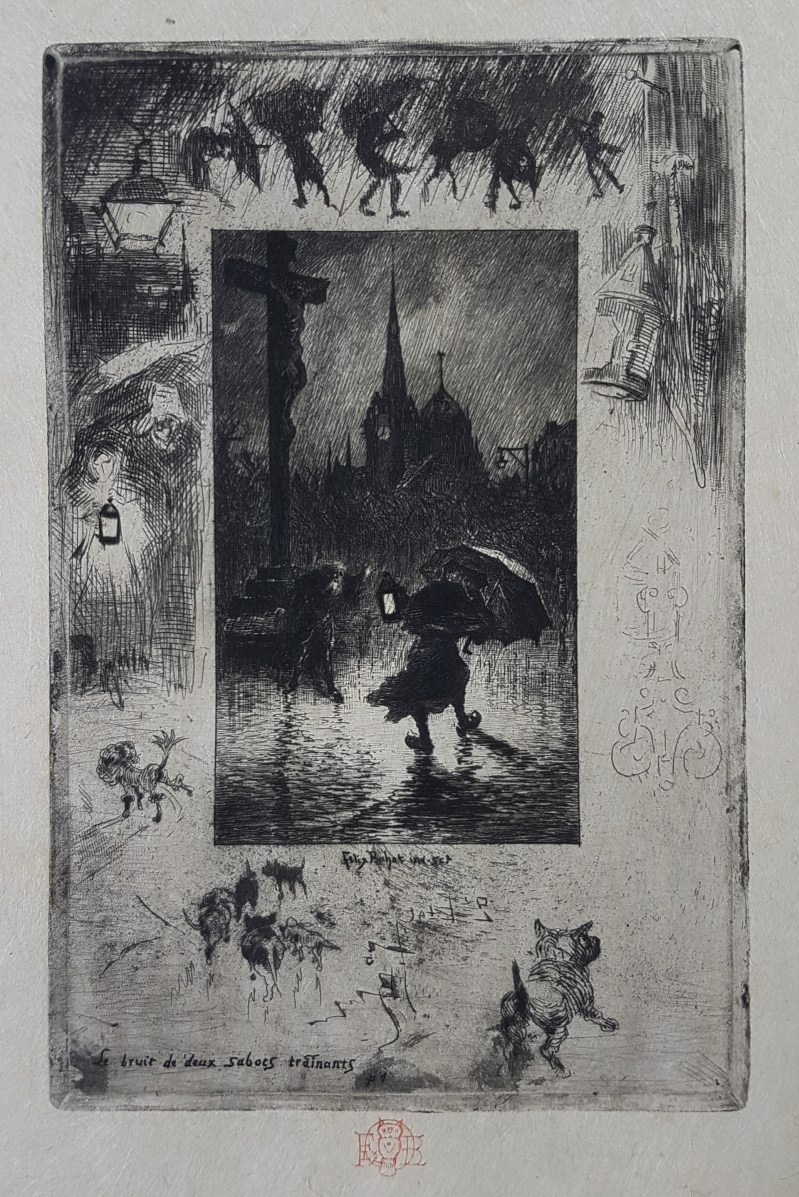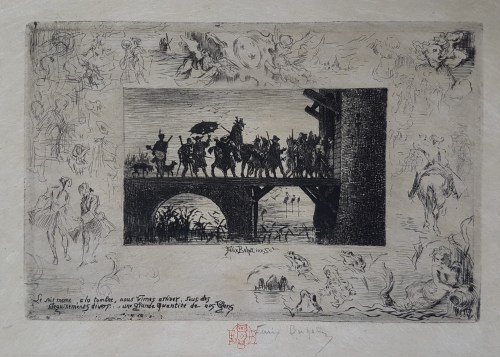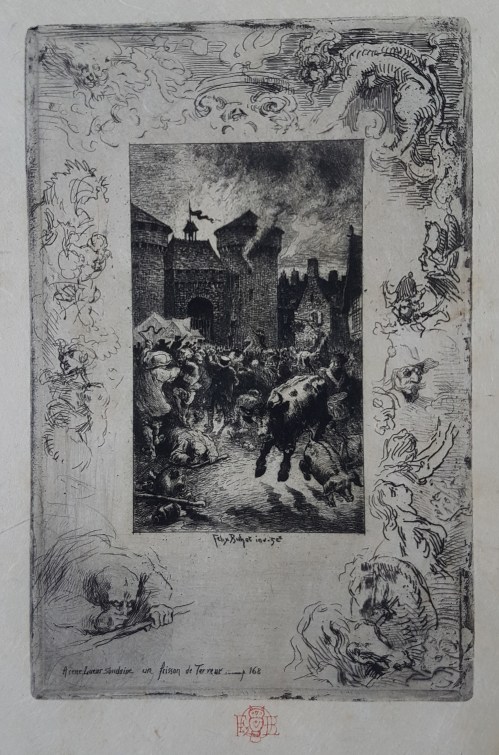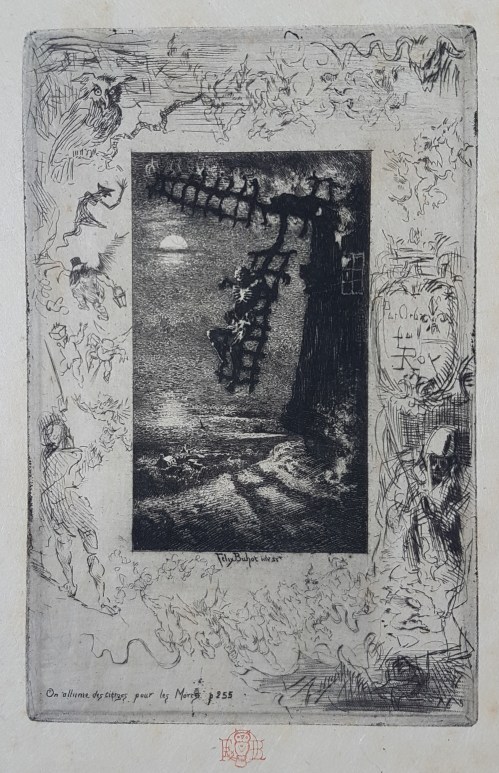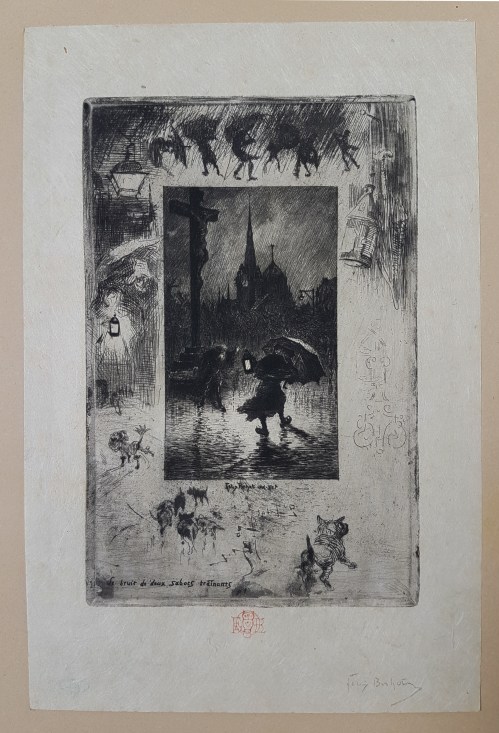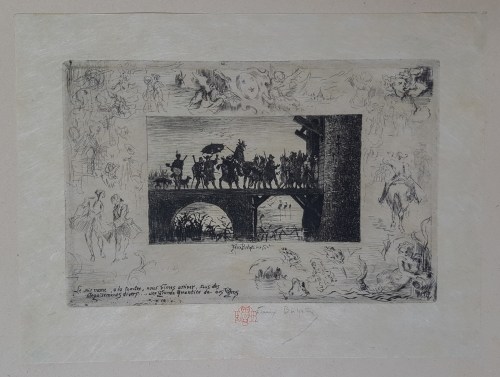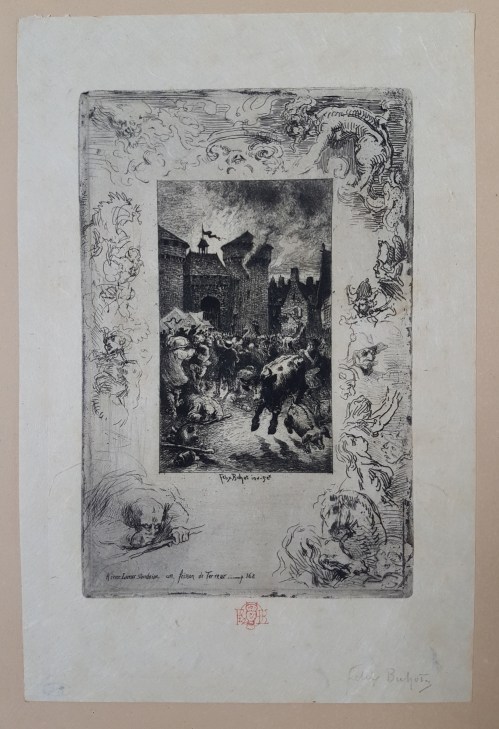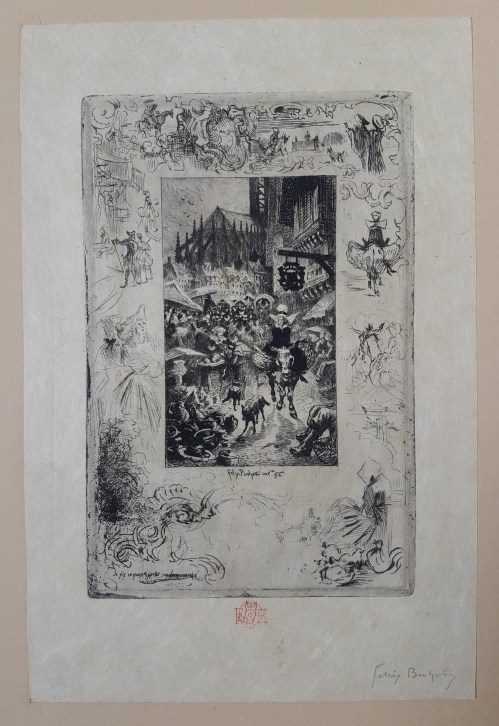Félix BUHOT: Illustrations for Le Chevalier Destouches by Barbey d’Aurevilly, 1878
SOLD
Etching and drypoint, each about 175 x 115 mm. Bourcard & Goodfriend 91 to 95 (B. & G. 91, 92 and 95, 3rd state (of 5); B. & G. 93 and 94, 4th state (of 6)).
Rare complete series of 5 plates, before erasing of the symphonics margins and before the plates were reduced. Edition of only 12 copies.
This series contains:
- Le Bruit de deux sabots traînant… [The Sound of two clogs shuffling along]
- Le Soir même… [That evening...]
- À cette lueur soudaine… [In this sudden light...]
- Je fis ce qu’on appelle un bon marché [I got what is commonly called a bargain]
- On allume les cierges… [The altar candles are being lit]
Superb impressions printed with surface tone on japan laid paper, exceptionally signed by Buhot in pencil in the margin. Buhot’s stamp (Lugt 977). Print dealer Marcel Lecomte’s collector stamp verso (Lugt undescribed).
Generally in very good condition. A few pale foxmarks. Full margins (sheets: each about 210 x 155 mm).
Le Chevalier Destouches was first published in 1864. Barbey d'Aurevilly met Jacques Destouches in 1856 in a lunatic asylum in Caen, where the old Chouan died two years later.
As Jean-Luc Dufresne points out, Buhot made the illustrations for L'Ensorcelée and Le Chevalier Destouches “spontaneously, and not because an order was placed”. Buhot met Barbey d'Aurevilly in 1872, and the writer introduced the artist to publisher Alphonse Lemerre. Barbey d'Aurevilly was a great admirer of Buhot's work; in the writer's words, Buhot “dreams with a head that is identical to mine”.
To Buhot, these prints were not just illustrations, but worked as an extension to the text. Regarding the publication of Manet's illustrations for the book Le Fleuve [The River] by Charles Cros in 1874, Buhot would say: “these sketches will gush out naturally from the text, as if from the pen of the writer, but modified by another creative genius.”
On this topic, J.-L. Dufresne mentions that Buhot used to write literary stories in his youth, and he would illustrate these stories with sketches. According to Dufresne, this habit resulted in the creation of symphonic margins: “Félix Buhot had well-developed literary tastes and the taste for writing prompted him to compose literary whimsies as he was still a teenager. He would illustrate these with sketches. In these illustrated literary attempts we can see the origin of the symphonic margin […]. » (Jean-Luc Dufresne, Valérie Sueur-Hermel, Alison McQueen, Félix Buhot, peintre graveur entre Romantisme et Impressionnisme, p. 112).



